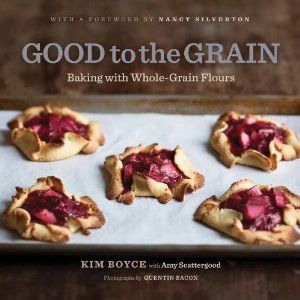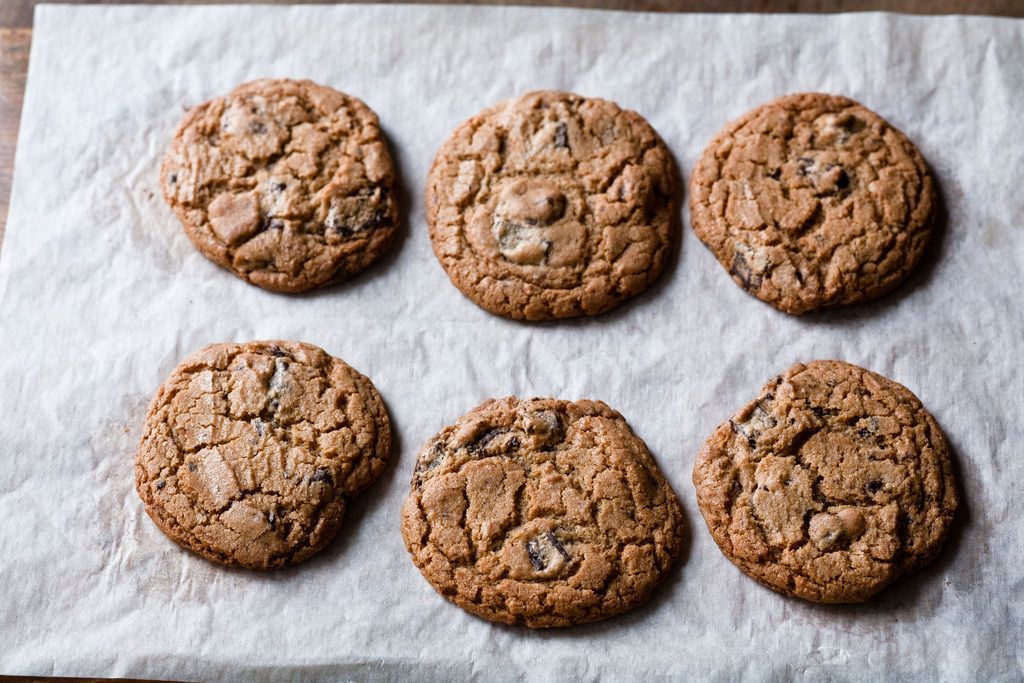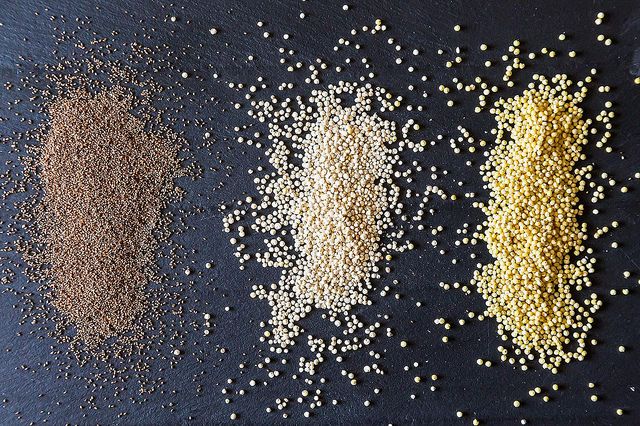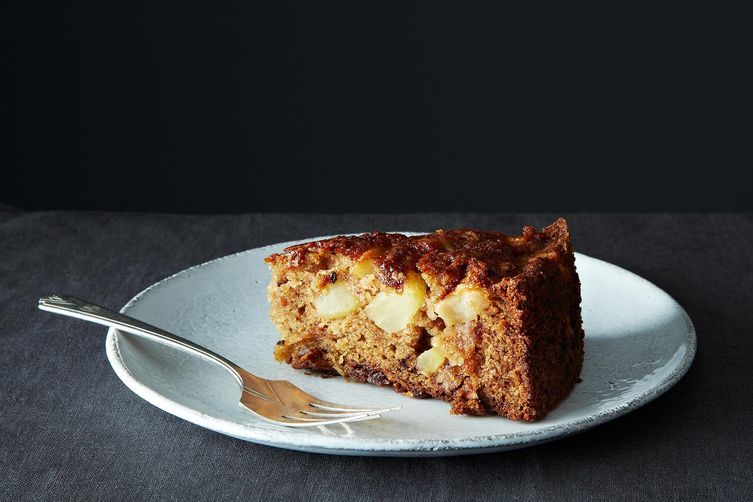We're sitting down with our favorite writers and cooks to talk about their upcoming cookbooks, their best food memories, and just about anything else.
Today: We chat with Kim Boyce, of Piglet-winning fame, about whole grains -- for some of her recipes, follow her Guest Editorship this week on Food52!


Kim Boyce is the kind of person who makes you want to put beets in your pancakes and whole grains in your chocolate chip cookies. And not because you feel like you should do that -- you who had a green smoothie for breakfast -- but because, in her recipes, doing that will make your food taste good.
Known for turning our favorite classic treats on their heads, Kim Boyce is the pastry chef behind the James Beard Award-winning book Good to the Grain and a bakery that we're sad we can't visit every day. She's also responsible for helping to spread the gospel of whole grains -- but not for the reasons you might think. We caught up with Kim recently to chat about experimenting with new flours, her philosophy as a baker, and her Piglet-watching snacks of choice.
Now go put whole grains in your cookies.

You're known for integrating whole grains into classic baked goods for flavor rather than for health; how much trial and error does a recipe typically go through before you get the right balance?
There was a huge learning curve with Good to the Grain, because it was the first time I was intensively baking with whole grains and whole-grain flours. Most recipes, in the beginning, went through anywhere from 9 to 11 trials to get them where I wanted texture-wise. There were 1 or 2 recipes that went through 13 or 14 tests before they were just right -- and my Brown Butter Muffin was one of those that were especially tough. I had to keep setting it aside and coming back to it over the course of a year until it was right; it wasn't until I understood fully how teff flour acted and behaved that it worked.
The whole process was difficult because I didn't want to be stuck in a sort of healthy, whole-grain category. I have a traditional pastry background, and so I wanted these pastries to look exactly like they would in any other bakery. I didn't want my pastries -- or this book -- to be defined by its whole grains. And that's why I had to test and re-test.
Is there a particularly tough flour to work with?
Like I just mentioned, teff is really difficult -- it took me a long time to learn how it reacts in different baked goods. Amaranth, too, because it has such a strong flavor which makes it tough to pair.

What advice would you give home cooks looking to experiment with more whole grains? Is there a good "starter flour," so to speak?
Yes! What I've told home cooks is that there are two things to remember. First, that rye flour is a great place to start -- it's mild and very easy to work with, much more so than whole-wheat. And second, it's simple to start substituting on a small scale, subbing in 1/4 to 1/2 cup of a whole-grain flour at a time. But if you go above 1/2 cup, you'll need to add more moisture. At that point, the whole grains are absorbing the liquid more quickly than all-purpose or pastry flour would. To combat this, either scale up the fat, or scale up the dairy.
It's a cold, February afternoon, and I'm curling up to read the latest Piglet judgment. What should I bake beforehand?
I'm in love with Louisa's version of Marie-Hélène's Apple Cake. It's the simplest cake: you roughly chop unpeeled apples, combine them with a small amount of batter, toss everything together, and bake. When I make it, I add SNAP and use gluten-free baking mix -- it comes out with a crisp, perfect crust that is completely different from the texture of the inside of the cake. It's basically apples suspended in batter, and it's a great snacking cake -- the kind you can have one slice of, and the next thing you know, the whole thing is gone.

In a judgment for the 2011 Piglet tournament -- which your book goes on to win -- Meg Hourihan writes, "There are moments in every cook’s life when a meal, or a recipe, or an ingredient, leads to a transformation…Good to the Grain reawakened the pleasures of baking for me." Do you have a moment that transformed you as a cook?
The path I was going down was reinforced when I was working with Nancy Silverton at Campanile. One day we were making an oroblanco sherbet and as we were making it all we could taste was a strong, bitter flavor. (Oroblanco grapefruits have a very thick, pithy rind -- almost like a pomelo.) Most cooks would try to cover that up -- it was strong, off-putting -- or at least try to balance it out. Instead, we ground up more peel in the Robot Coupe and added those to the sherbet, too.
And that was the transformative moment: this idea that everything should taste as it is. In the sherbet, we were using the whole fruit to get the whole flavor, and for me as a cook that was so instrumental. That same moment kept coming up in the development of Good to the Grain, too -- I had to keep remembering to make things taste of themselves.







See what other Food52 readers are saying.